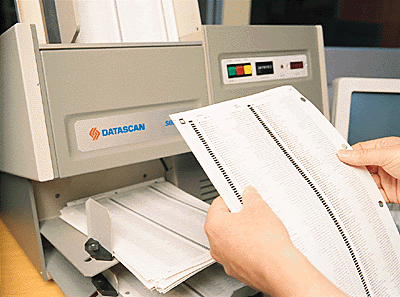Australian Electoral Commission


The initial counting of the votes conducted on election night is followed by a "fresh scrutiny" commencing on the Monday after polling day. The DROs recount all ordinary votes. Some ballot papers treated as informal on polling night may be admitted to the count by the DRO, and similarly any ballots previously regarded as formal may be classified as informal.
The scrutiny of declaration votes (pre-poll, postal, absent and provisional) also begins after polling day. The scrutiny of declaration votes is conducted in two stages:
A postal vote will be accepted for further scrutiny if the DRO is satisfied that:
A pre-poll, absent or provisional vote will be accepted for further scrutiny if the DRO is satisfied that:
The AEC must wait 13 days after polling day for all postal votes to be received before it can finalise counting.

After an election Certified Lists of electors are electronically scanned for apparent non-voters and possible multiple voting.
The scanners identify from the Certified Lists:
Two reports are produced following scanning:
Following identification of apparent non-voters and possible multiple voters DROs write to all these voters seeking details as to why they did not vote or why more than one mark appears against their name on the Certified List. In most instances the DROs' enquiries show that these cases cancel each other out. The small number of names remaining on the reports are investigated.
Cases of apparent multiple markings are examined to determine whether referral to the Australian Federal Police is necessary. A person who does not vote at a federal election has the option of paying a penalty of $20, providing a reason which must be valid and sufficient, or having the matter dealt with in court – in which case they may be fined up to $50 plus court costs.
At the 1996 federal election scanning took place at permanent AEC scanning centres in New South Wales, Victoria, South Australia and Queensland and at temporary locations in Western Australia. Tasmanian lists were scanned in Victoria, Australian Capital Territory lists were scanned in New South Wales and Northern Territory lists were scanned in Queensland.
Scanning commenced at all sites on Monday 4 March 1996.
Once the votes have been counted and a winner has been determined there is a public declaration of the result of the poll. The declaration of the poll for each seat of the House of Representatives is conducted by the relevant DRO at the place of nomination. Similarly, the declaration of the Senate poll is conducted by the AEO for each State and Territory at the place of nomination.
The division of Calwell in Victoria was the first seat declared for the House of Representatives on 7 March 1996. All seats were declared by 28 March 1996.
Senate polls were declared between 21 March and 11 April 1996.
The writs for an election must be returned within 100 days of their issue. For the 1996 federal election the writs were to be returned by 8 May 1996. All writs were returned by 11 April 1996.